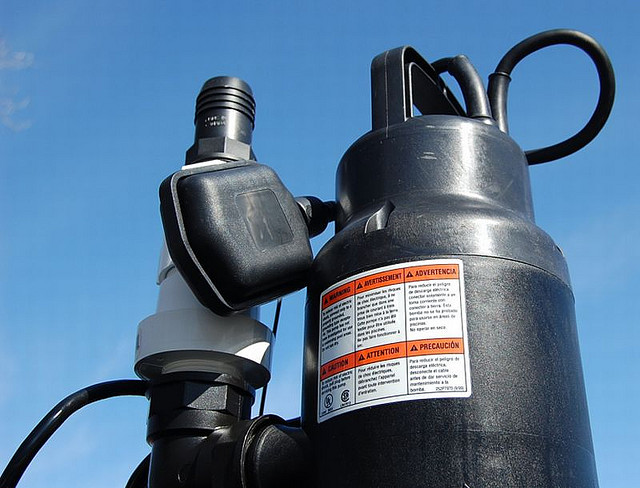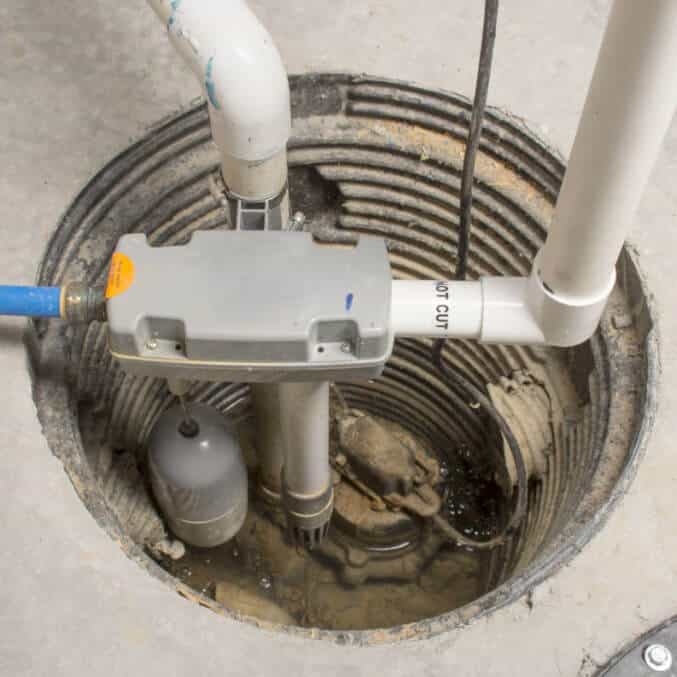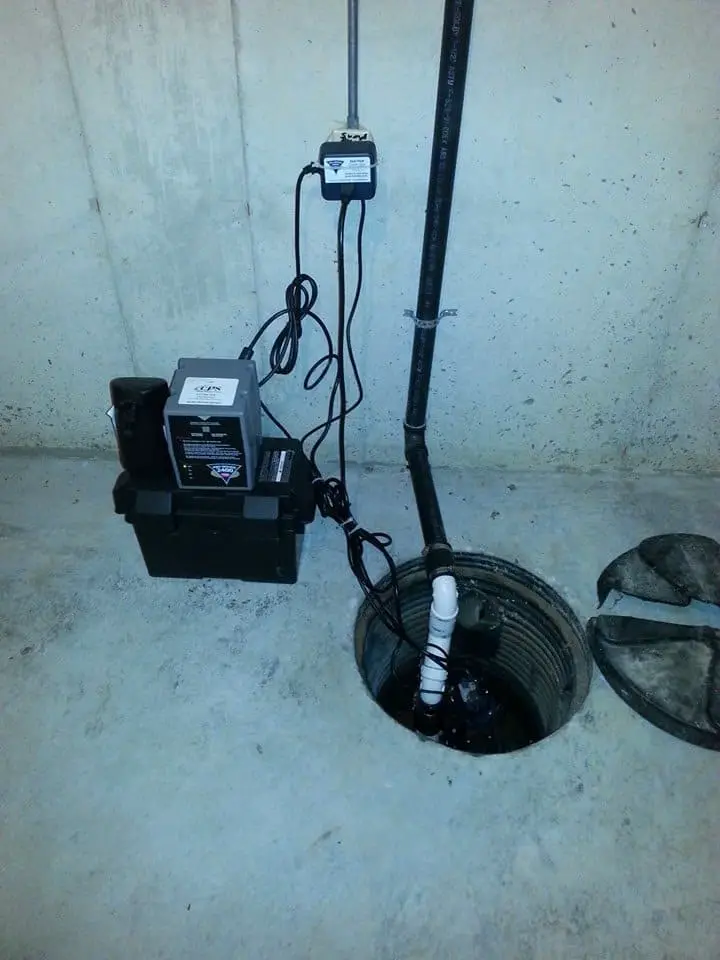How Do I Know If My Sump Pump is About to Quit?
Your sump pump is one of the most important pieces of equipment in your home, and you rely on it to keep your basement dry. But what happens when your sump pump starts to fail? How can you tell if it’s about to quit on you?
There are a few signs that your sump pump is about to fail. If you notice any of these, it’s time to call a plumber and have them come take a look.
1. The float switch isn’t working properly.
This is the part of the sump pump that turns the pump on when water levels start to rise. If the float switch isn’t working, the pump won’t turn on and your basement will flood.
2. There’s water leaking from the pump.
This could be a sign that there’s something wrong with the seals or gaskets inside the pump. If there’s water leakage, it could damage the electrical components of the sump pump and cause it to fail completely.
3. The motor is making strange noises.
If you hear grinding, whining, or other strange noises coming from your sump pump, it could be a sign that the bearings are going out or there’s some other problem with the motor.
If you have a sump pump, it’s important to know the signs that it might be about to quit. By understanding these signs, you can take steps to prevent flooding in your home and avoid costly repairs.
One of the most common signs that a sump pump is about to fail is if it starts making strange noises.
If you hear grinding, whining, or other unusual sounds coming from your sump pump, it’s time to take action. Another sign that your sump pump is on its last legs is if it doesn’t seem to be working as well as it used to. If your pump isn’t keeping up with heavy rainfalls or seems to be running more frequently than usual, something is likely wrong.
If you notice either of these signs, the best course of action is to call a professional for help. They can diagnose the problem and recommend the best solution, whether that’s repairing your existing pump or installing a new one. Don’t wait until your sump pump fails completely – by then, it will be too late to avoid flooding in your home.
6 Things Sump Pump Owners NEED to Know
How Do I Know If My Sump Pump is Not Working
If your home is prone to flooding or water damage, a sump pump is a vital piece of equipment. These pumps are designed to remove water from your basement or crawl space, preventing costly repairs. But what happens when your sump pump stops working?
How can you tell if it needs repair or replacement?
There are a few signs that indicate your sump pump is not working properly. If you notice any of the following, it’s time to call a professional for help:
-Your basement is constantly wet or damp, even after heavy rains.
-You see water seeping through cracks in your foundation.
-Your floors are beginning to warp or buckle.
-Mold or mildew is growing in your basement.
If you suspect your sump pump isn’t working correctly, don’t wait to get it checked out. A broken sump pump can lead to serious water damage in your home – and that’s something no homeowner wants to deal with!
Sump Pump Not Working
If your sump pump has stopped working, there are a few things you can do to try and troubleshoot the problem. First, check to see if there is power going to the pump. If the pump is plugged in and there is still no power, you may need to replace the fuse or circuit breaker.
Next, check the float switch to see if it is stuck in the “on” position. If so, simply unstick it and see if that solves the problem. Finally, check the intake screen for debris that may be blocking water from entering the pump.
If all of these things fail, then you likely need to replace your sump pump.
Sump Pump Maintenance
If you have a sump pump in your basement, it’s important to keep it well-maintained. A sump pump helps to remove water from your basement and keep it dry. Here are some tips for maintaining your sump pump:
1. Check the power source: Make sure that your sump pump is plugged in and has a reliable power source. If the power goes out, your sump pump will not be able to do its job.
2. Test the pump regularly: It’s a good idea to test your sump pump every few months to make sure it’s working properly.
Simply pour a bucket of water into the pit where the pump is located. The pump should turn on and start pumping out the water within a minute or two.
3. Keep the pit clean: Keep debris and sediment out of the pit where the sump pump is located.
This can clog up the Pump and cause it to fail over time.
4 . Replace the Pump if necessary : Like any mechanical device, eventually your sump pump will need to be replaced .
Most pumps last for about 10 years before they need to be replaced . If you notice that your Pump isn’t working as well as it used to , or if it starts making strange noises , it’s probably time for a new one .
How Often to Replace Sump Pump Check Valve
If your home has a sump pump, it’s important to know how often to replace the check valve. This valve is responsible for keeping water from flowing back into the sump pit after the pump has turned off. If the valve is damaged or worn out, it can cause serious problems.
Most sump pumps have a check valve that needs to be replaced every three to five years. However, some valves may need to be replaced more often if they are used in high-demand areas or if they are subject to frequent repair. It’s a good idea to check your owner’s manual or contact the manufacturer for specific replacement interval recommendations.
If you’re not sure how to replace your sump pump check valve, don’t worry! The process is relatively simple and can usually be done in about an hour. Just be sure to follow all instructions carefully and use only approved replacement parts.
How Long Do Zoeller Sump Pumps Last
Are you in the market for a new sump pump? If you are, you may be wondering how long Zoeller sump pumps last. While the answer may vary depending on a number of factors, such as how often the pump is used and how well it is maintained, Zoeller pumps are generally built to last.
In fact, many Zoeller pumps come with a warranty that guarantees their performance for up to five years.
So, if you’re looking for a reliable and long-lasting sump pump, Zoeller is a great option to consider. And, with proper care and maintenance, your Zoeller pump can provide years of trouble-free operation.
Sump Pump Not Working Basement Flooded
If your sump pump isn’t working, your basement is at risk of flooding. A sump pump is a key part of any home’s flood prevention system, so it’s important to keep it in good working order.
There are a few reasons why your sump pump might not be working properly.
The most common reason is that the float switch, which turns the pump on and off, is stuck in the “off” position. This can happen if the float gets caught on something or if there is debris in the pit. Another common problem is that the impeller, which helps move water through the pump, becomes clogged with debris.
If you suspect that your sump pump isn’t working properly, it’s important to take action quickly. First, check to see if the float switch is stuck in the “off” position. If it is, try clearing away any debris that might be blocking it.
If that doesn’t work, you’ll need to replace the float switch.
Next, check for a clogged impeller by removing the cover from the sump pit and looking inside. If you see debris blocking the impeller blades, use a wire brush to clean them off.
If that doesn’t solve the problem, you may need to replace the impeller assembly.
Once you’ve checked for these two common problems and made sure that your sump pump is in good working order, you can rest assured knowing that your basement will be protected from flooding!
What Does a Sump Pump Do
A sump pump is a device that is used to remove water that has accumulated in a sump basin. A sump pump can be used to remove water from a variety of sources, including basements, crawlspaces, and other areas where water can accumulate.
Sump pumps are typically used to remove groundwater that has seeped into a basement or crawlspace.
When the water level in the sump basin rises above a certain level, the sump pump will automatically turn on and begin pumping the water out of the basement or crawlspace.
Sump pumps can also be used to remove rainwater or melting snow from an area. If you have an area of your yard that floods when it rains or during periods of heavy snowmelt, you can install a sump pump to help keep the area dry.
Sump pumps are available in a variety of sizes and styles. Some sump pumps are designed for use in residential applications, while others are designed for industrial or commercial use. Sump pumps can be purchased at most hardware stores or home improvement centers.
Best Sump Pump
If your home is subject to flooding, or if you simply want to be prepared for the possibility of a wet basement, then you need a sump pump. A sump pump is a small pump that sits in a pit at the lowest point in your basement and pumps water out of your home when the water level gets too high.
There are many different types and models of sump pumps on the market, so it’s important to do your research before purchasing one.
One thing to consider is whether you want a battery-operated model or one that plugs into an outlet. Battery-operated models are great for homes that lose power often, but they can be more expensive upfront.
Another consideration is the size of the sump pit.
Some pits are very small, while others are quite large. Make sure to measure your space before buying a pump so that you get one that will fit properly.
Once you’ve decided on the type of sump pump you need, it’s time to install it.
This is usually a fairly simple process, but if you’re not comfortable doing it yourself, there are plenty of professionals who can help.
Once your sump pump is installed, all you need to do is test it periodically to make sure it’s working properly. If you live in an area with frequent flooding, it’s also a good idea to have a backup plan in place in case your primary pump fails.

Credit: www.superterry.com
What is the Average Life of a Sump Pump?
A sump pump is a device that is installed in the lowest point of a home’s foundation in order to prevent basement flooding. Sump pumps are most commonly used in areas where the groundwater level is higher than the level of the basement floor. When water enters the sump pit, the sump pump turns on and begins pumping the water out of the pit and away from the home.
The average lifespan of a sump pump is between 7 and 10 years, with some pumps lasting up to 15 years. However, there are several factors that can affect a sump pump’s lifespan, such as:
-How often it is used: A sump pump that runs frequently (several times per week or more) will have a shorter lifespan than one that only runs occasionally (once per week or less).
-The quality of the pump: Higher-quality pumps made with durable materials will last longer than lower-quality pumps made with cheaper materials.
-Maintenance: A well-maintained sump pump will last longer than one that isn’t regularly cleaned and serviced.
What Happens When a Sump Pump Goes Bad?
If you have a sump pump in your home, it’s important to know what to do if it goes bad. A sump pump is responsible for pumping water out of your basement or crawl space to prevent flooding. If the pump stops working, water can quickly build up and cause extensive damage to your home.
There are a few signs that indicate your sump pump is going bad. If you notice any of these, it’s important to take action right away:
1. The Pump is Noisy
If your sump pump starts making strange noises, this is often an indication that something is wrong. The most common noise you might hear is grinding, which could be a sign that the bearings are failing. You might also hear gurgling or bubbling noises, which could mean there’s something caught in the impeller.
If you hear any strange noises coming from your sump pump, it’s best to contact a professional for help.
2. Water isn’t Being Pumped Out Properly
Another sign that your sump pump is going bad is if water isn’t being pumped out properly.
This could be due to a number of different issues, such as a blockage in the discharge pipe or a problem with the float switch. If water isn’t being pumped out properly, it can quickly lead to flooding in your basement or crawl space.
3..
There’s Water Leaking from the Pump
Another potential issue is if you notice water leaking from the sump pump itself. This could be due to a cracked housing or loose fittings.
Regardless of the cause, any type of leak should be fixed immediately as it can quickly lead to more serious problems down the road..
4.. The Pump Runs Constantly
In some cases, the sump pump will start running constantly – even when there hasn’t been any recent rainfall . This usually indicates that there’s an issue with the float switch , which tells the pump when to turn on and off . If left unchecked , this problem can cause premature wear and tear on the pump , resulting in an early failure ..
5..The Pump Won ‘ t Turn On
One of the most obvious signs that something is wrong with your sump pump is if it won ‘ t turn on at all .
What is the Most Common Reason for Sump Pump Failure?
The most common reason for a sump pump to fail is due to a power outage. If the power goes out, the sump pump will not be able to operate and will not be able to remove water from the basement. Another common reason for sump pump failure is due to a clogged intake pipe.
If the intake pipe becomes clogged, the water will not be able to flow into the sump pit and the pump will not be able to remove the water from the basement.
When Should I Replace My Sump Pump?
If your sump pump is more than 10 years old, it may be time to replace it. Even if it’s still working, an older sump pump may not be as efficient as a newer model.
There are a few signs that indicate your sump pump needs to be replaced:
1. The pump is making noise.
2. The pump isn’t removing water from the sump pit as quickly as it used to.
3. You’re having to reset the float switch more often than usual.
4. Water is leaking from the pump or discharge pipe.
If you’re not sure whether your sump pump needs to be replaced, you can always call a plumber for an inspection and advice.
Conclusion
If your sump pump is more than 10 years old, it may be time to start shopping for a replacement. Here are some other signs that your sump pump might be about to quit:
-It’s making strange noises
-It’s running more frequently than usual
-It’s not removing water from the sump pit as effectively as it used to




